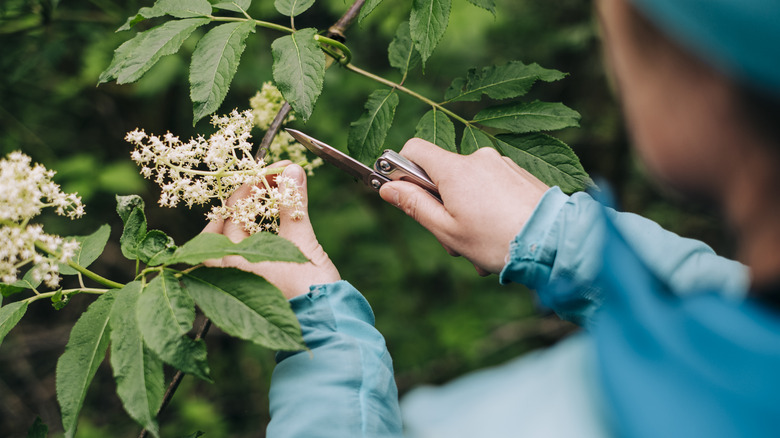Explore Your Creative Side With The Basics Of Japanese Flower Arranging
We may receive a commission on purchases made from links.
Whether you practice mindfulness every single day or you want to bring more of that into your life, the art of Japanese flower arranging is about to become your new therapeutic friend. It's part art, part meditation, and part exceptionally beautiful minimalist home decor — and the creative process becomes just as important as the end result.
Perhaps you've already mastered the TikTok-approved hack for arranging flowers and consider yourself an expert on colorfully round bouquets. But Japanese flower arranging, also known as ikebana (which means "giving life to flowers" in Japanese), is completely different. It is considered one of the classical Japanese disciplines in refinement, which prefaces simplicity, minimalism, and mindfulness. While traditional flower bouquets have many of the same kind or color of flowers bundled together, ikebana arrangements are sparse and asymmetrical. Although there are many ways of designing an arrangement, they usually have tall, medium, and short stems that very clearly vary in their length. Almost appearing to be haphazardly placed, these Japanese floral arrangements are thoughtfully planned and intentionally designed to emphasize each aspect of the individual flowers and enhance their natural beauty within the negative space. It's this concept that makes ikebana very different from the bouquets we're used to.
There are a slew of ikebana schools that vary in their approaches. It can take half a decade or longer to master the technique, but there's no better place to start than a brief rundown of the basics.
How does Japanese flower arranging work
Although Japanese flower arranging is steeped in history with specific rules, principles, and techniques, we're just exploring the basics to get you started on your next living project. The thing about Japanese flower arranging is that the practice isn't as rigid as you might think. You can pick as many pieces as you want, like seasonal flowers, cherry blossoms from the tree you planted in your backyard, dried plants, or tall feathery-like stems. However, you'll use less than a dozen for your final project. Experts recommend selecting your favorite stem and comparing it to the others to determine which combinations will work well together.
A couple of tools you'll want to have are Japanese pruners (Amazon) for cutting the thicker branches, and floral clippers (Amazon) for the stems that can double as a tool to help you grow and care for a bonsai tree. A kenzan or flower frog (Amazon) will help hold stems in place with its sharp pins, which can be used with water or at the bottom of a shallow vase. You can also add other elements in your arrangement to hold branches and stems in place, like pieces of bark, perfectly placed stalks, and rubber bands to tie the pieces together. Experiment with different looks, cutting leaves, stems, or flowers off as you go until it looks exactly how you want it. TikTok creator @japanese_nature has mesmerizing videos to inspire you.
Things to know about Japanese flower arrangements
Different flowers, plants, and even shapes have specific meanings in Japanese culture, but the most important thing is to find stems that spark the most joy or even a fond memory. If that means you want to use traditional Japanese flowers, try ones like cherry blossoms, wisteria, roses, lotuses, sunflowers, hydrangeas, pine branches, and chrysanthemums. Depending on your location, consider using flowers or leaves that are seasonal to your area. And if real flowers are too much work, you can still create a heavenly piece with artificial flowers that look real.
As with any living flower or plant, the length of time your Japanese flower arrangement will last depends on the type of flower and its freshness when you use it. Experts recommend giving your ikebana creation some fresh water to extend its life, which typically ranges from a few days to weeks. But remember, these arrangements aren't meant to last forever but rather to capture a moment or a season.
Some arrangements have incorporated water into its overall look, which is another important element. That's why you'll see many pieces that are partially, or even fully, submerged. But not all flowers will work without rotting underwater. Sturdy flowers that won't mind being in your Japanese flower arrangement and covered in water include orchids, dogwood, tulips, roses, and daisies. You might have to change the water to avoid murkiness, but your flower should remain intact.


